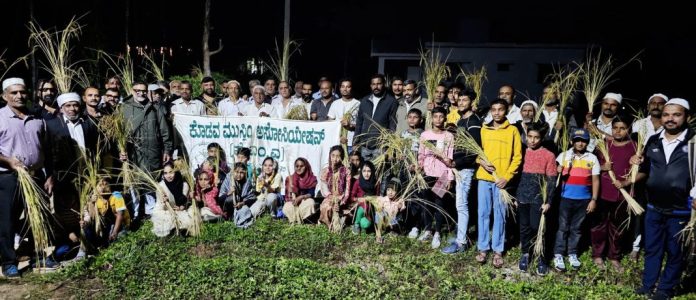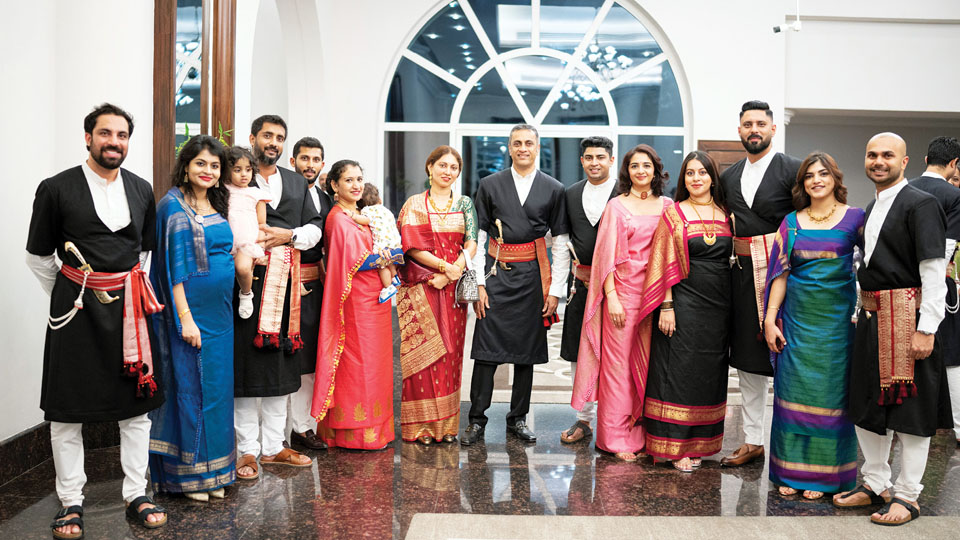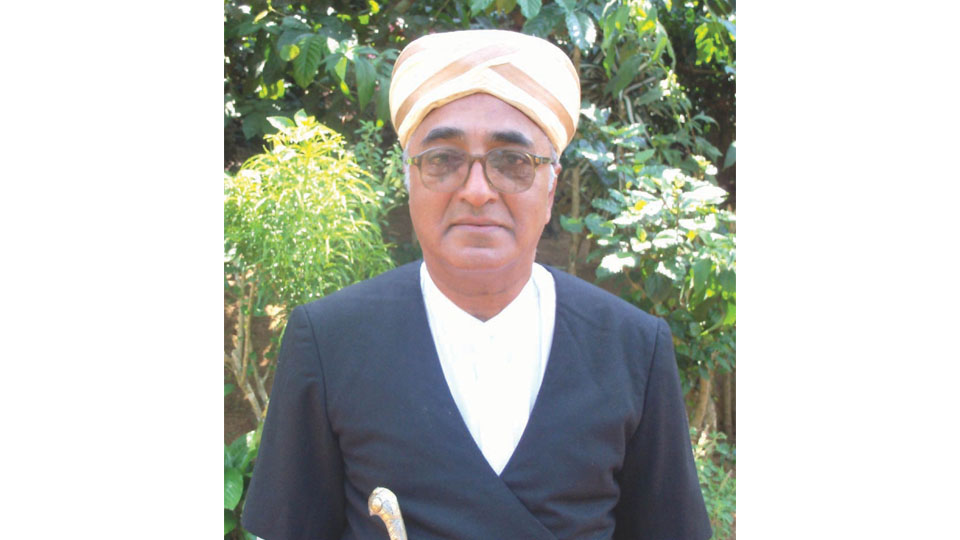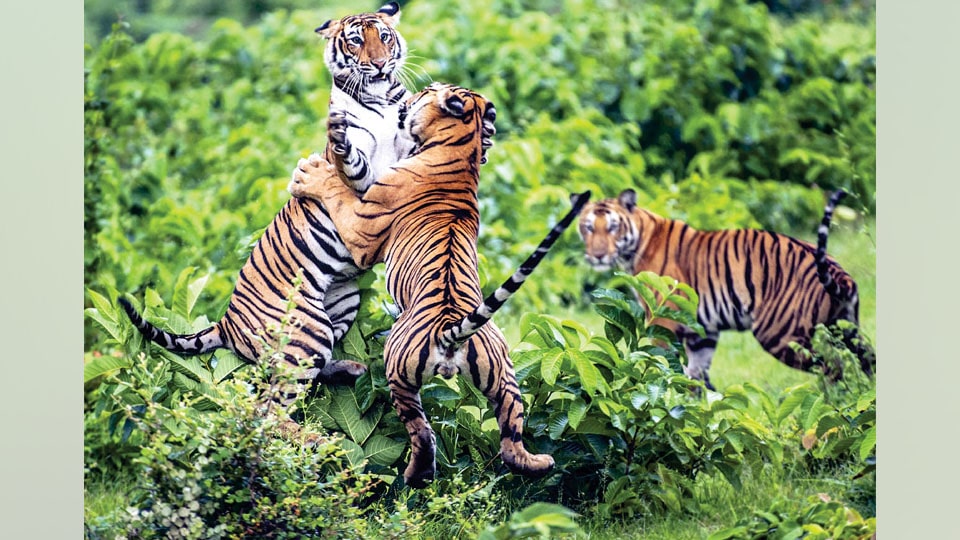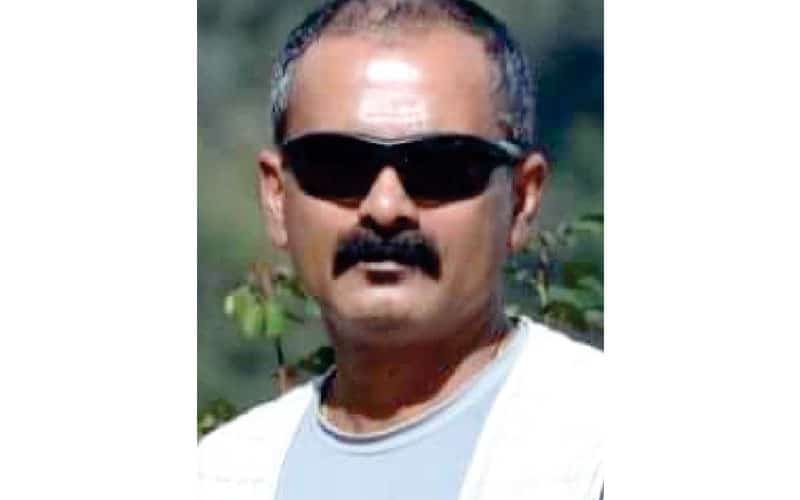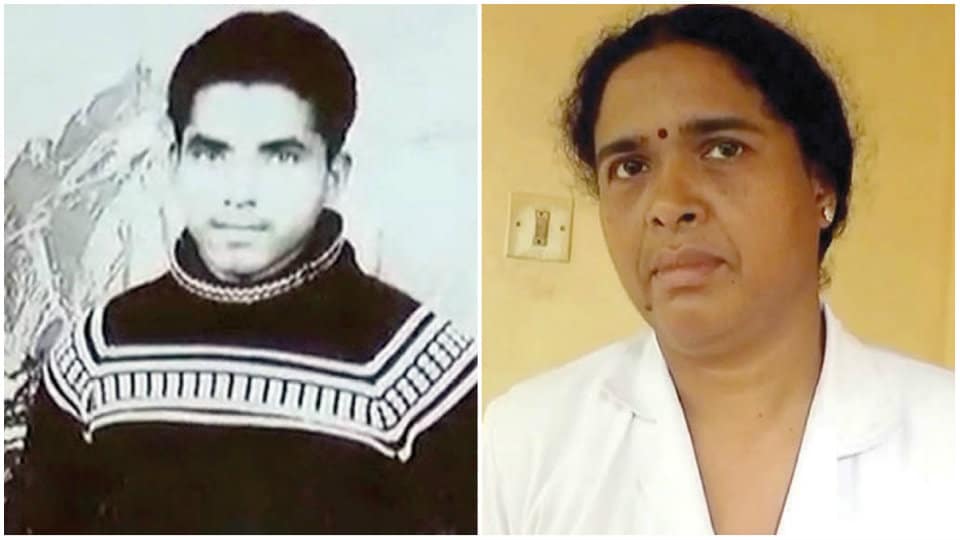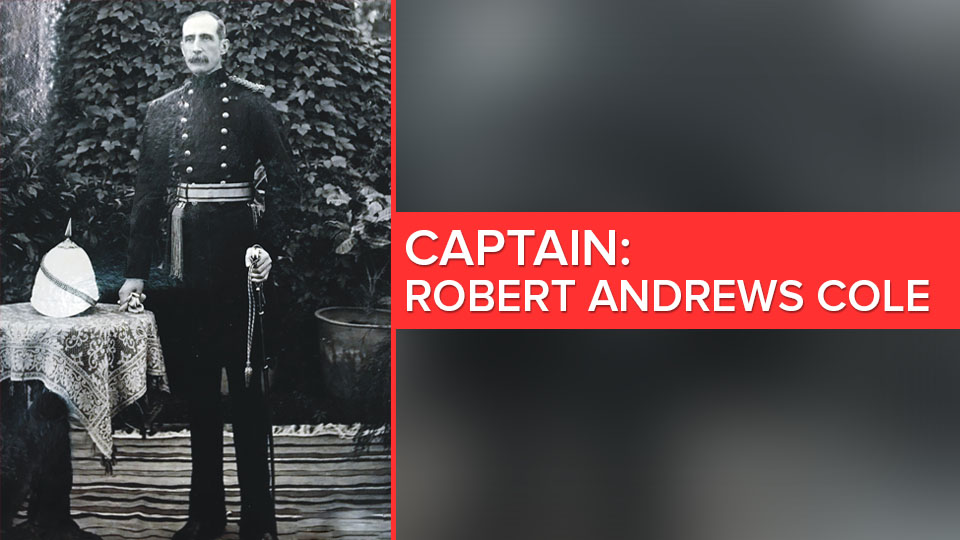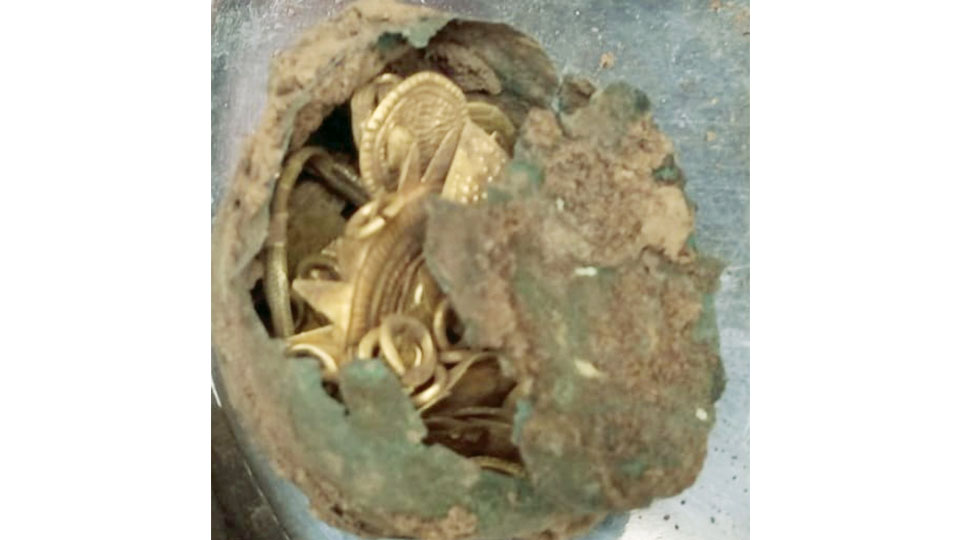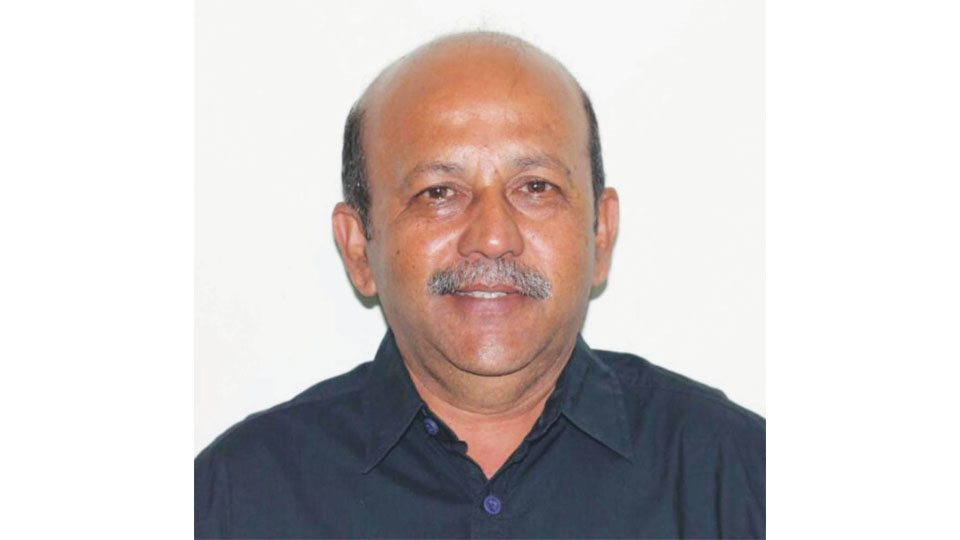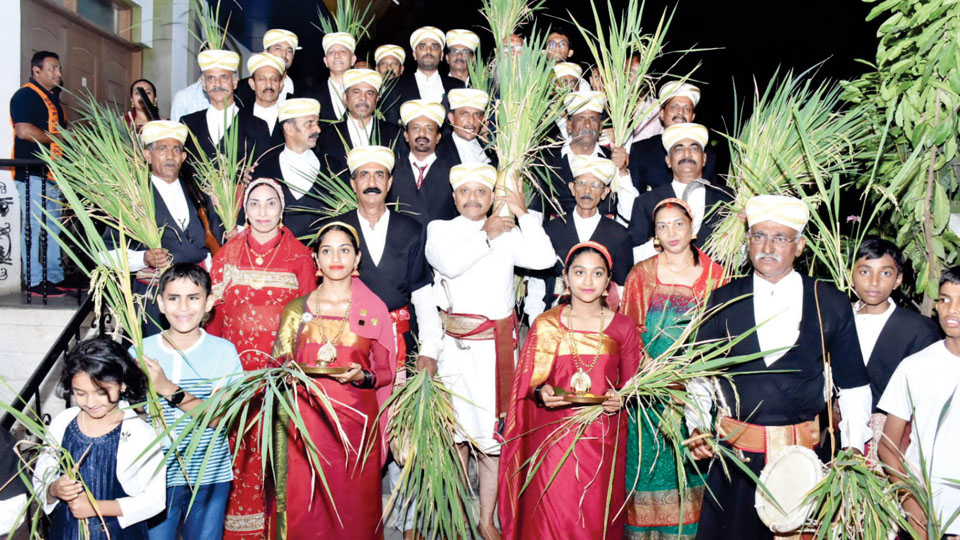
Youth Wing of Mysuru Kodava Samaja inaugurated
Mysore/Mysuru:
‘Puthari Namme,’ the harvest festival of Kodagu, symbolising the first harvest of the paddy crop, was celebrated in a grand and traditional manner last evening at the Kodava Samaja in Vijayanagar First Stage here.
The festivities showcased a diverse array of Kodava cultural events, eliciting enthusiastic applause from the gathered audience.
Hundreds of Kodava community members including men, women and children had gathered at the Kodava Samaja and took home the paddy crop (kadiru), chanting “Poli Poli Deva” and prayed to Lord Igguthappa and Goddess Cauvery and welcomed the Dhanya Lakshmi to their homes.
The highlight of the event was the cultural performances by young community members who have spent hours and days learning the traditional Kodava dances and songs. Their performance received loud applause from the community members and the boys and girls have been saddled with continuing the tradition of this small community that is facing the onslaught of modernisation.
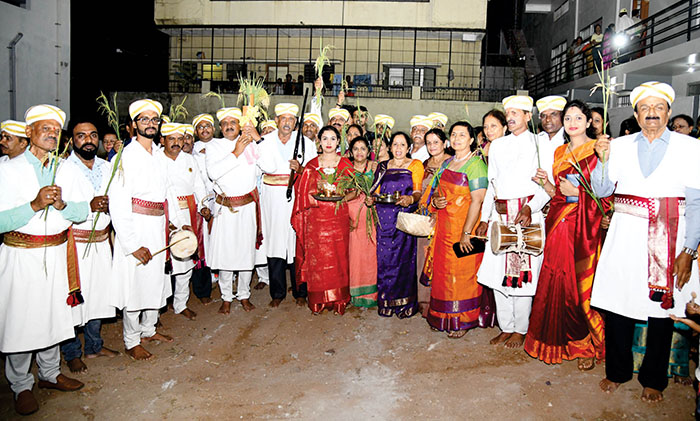
The performances featured captivating dances like ‘Ummathaat’, ‘Bolakaat’, ‘Puthari Kolata,’ ‘Kathiyaat,’ ‘Baalopaat,’ ‘Pareyakali’ and ‘Taalipaat’.
Notably, a new Youth Wing of the Mysuru Kodava Samaja was inaugurated and Katera Vedik Uthaiah has been nominated as its President. The other members of the team will be announced soon.
Commencing with a puja dedicated to the deities Lord Igguthappa and Goddess Cauvery, the festival progressed with a symbolic harvesting of the paddy crop (kadiru) and ceremonial firing into the air.
Kodava men donned their traditional attire of ‘kupya-chele,’ ‘peechekathi,’ and ‘mande-tuni,’ while women adorned themselves in the customary red sarees and ‘vasthra.’
As an integral part of the festivities, special ‘tambittu’ made from fried ‘kusubalakki’ mixed with ripe banana, was distributed to all the members.
Mysuru Kodava Samaja teams that have won various prizes in hockey matches and other cultural performances at Federation of Kodava Samajas, Balugodu, were honoured.
Mysuru Kodava Samaja President Ponjanda A. Ganapathy, Vice-President Machimada P. Nanaiah, Hon. Secretary Ketolira Ravi Belliappa, Treasurer Ittira Kashiappa, Joint Secretary Ajjikuttira Diana Poovaiah, Kodava Samaja Cultural and Sports Club President Kuttimada D. Muthappa, office-bearers and committee members were present on the occasion.
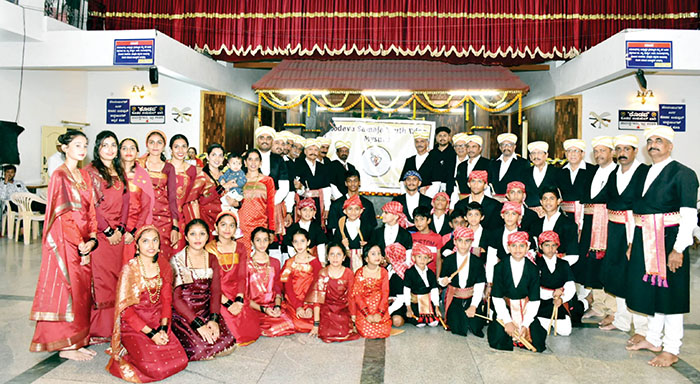
The harvest festival was also celebrated at Kodagu Gowda Samaja in Vijayanagar Railway Layout, Mysuru.
Simultaneously, ‘Puthari Namme’ was celebrated in grandeur across Kodagu district yesterday.
The festival commenced with the ‘Nere Kattu’ performance at Kakkabbe’s Paadi Sri Igguthappa Temple at 7.30 pm. Subsequent celebrations were held across Kodagu district.
Though the festival concluded yesterday, the celebrations are set to continue for a week in rural areas of Kodagu and during this extended period, traditional ‘Puthari Kolata’ will take centre stage, accompanied by various other dance forms at the designated ‘Mandh’ in villages.
source: http://www.starofmysore.com / Star of Mysore / Home> News> Top Stories / November 28th, 2023
